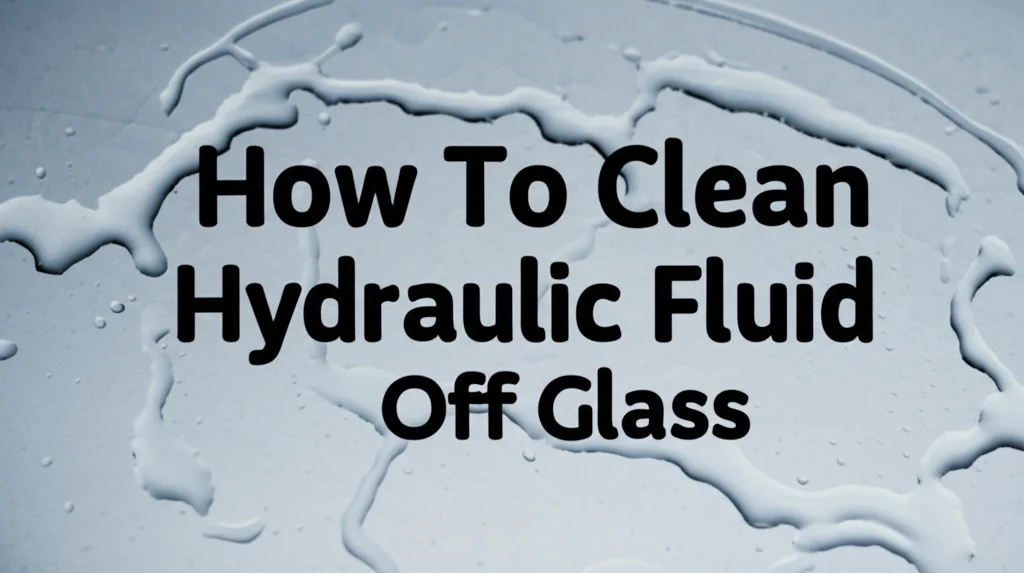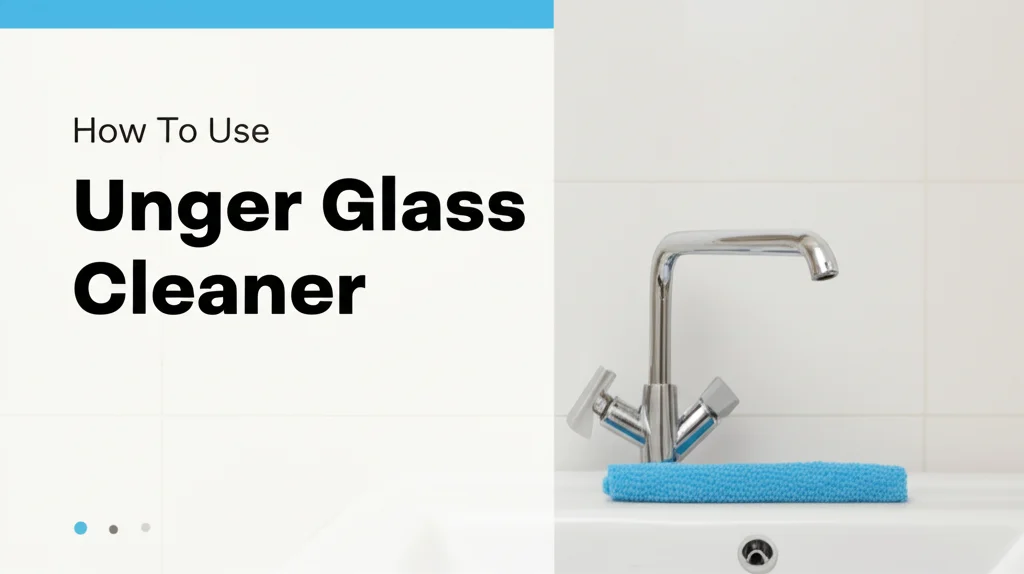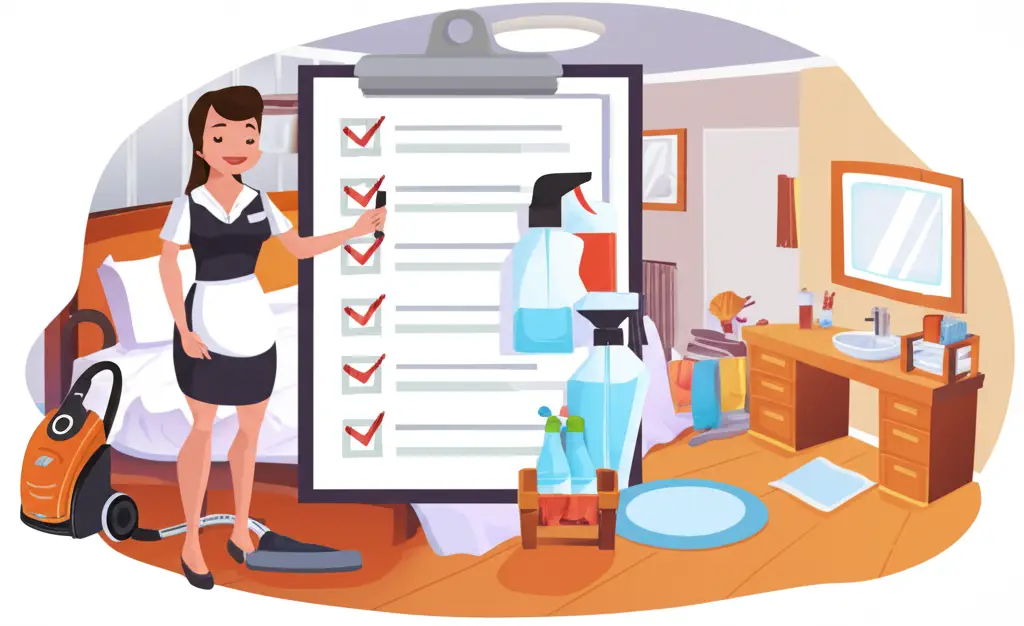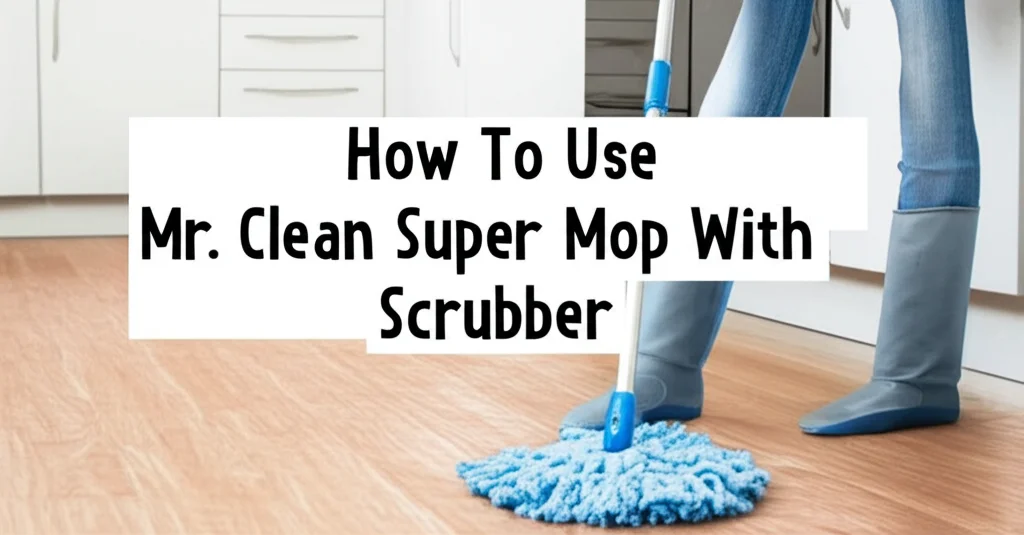· Cleaning Guides · 7 min read
How To Clean Hydraulic Fluid Off Glass

Cleaning Hydraulic Fluid From Glass: A Step-by-Step Guide
Have you found yourself with a sticky, oily mess of hydraulic fluid on your glass surfaces? It’s a common problem in garages, workshops, and around heavy machinery. Hydraulic fluid isn’t something you want lingering around, as it can be harmful and unsightly. This article will walk you through exactly how to clean hydraulic fluid off glass, restoring clarity and safety to your surfaces. We’ll cover everything from the initial cleanup to the final polish, ensuring a spotless result. Let’s dive in and get that glass sparkling again!
Quick Answer: To clean hydraulic fluid off glass, start by absorbing excess fluid with paper towels. Then, use a degreasing cleaner like dish soap and warm water, followed by a glass cleaner for a streak-free finish.
Takeaway:
- Absorb excess fluid immediately.
- Use a degreasing cleaner first.
- Finish with a dedicated glass cleaner.
- Safety first: wear gloves and eye protection.
Understanding Hydraulic Fluid and Its Impact on Glass
Hydraulic fluid is a non-compressible liquid used to transmit force in hydraulic systems. It’s commonly found in machinery like cars, tractors, and industrial equipment. Because of its oily nature, hydraulic fluid adheres strongly to glass, leaving a stubborn residue. This residue isn’t just unsightly; it can also reduce visibility and create a slipping hazard. Understanding the fluid’s composition helps you choose the right cleaning approach. It’s crucial to address spills quickly to prevent the fluid from drying and becoming even more difficult to remove.
Immediate Action: Absorbing the Excess Fluid
The first step in cleaning hydraulic fluid off glass is to absorb as much of the spill as possible. Don’t delay – the longer the fluid sits, the harder it will be to clean. Grab plenty of clean paper towels or absorbent cloths. Gently blot the spill, working from the outside in to prevent spreading the fluid. Avoid rubbing, as this will only push the fluid further into the glass surface. Dispose of the used paper towels properly, as hydraulic fluid is considered hazardous waste.
Choosing the Right Cleaning Solution for Hydraulic Fluid
Selecting the right cleaning solution is vital for effectively removing hydraulic fluid. Water alone won’t cut through the oil, so you need something with degreasing properties. Here are a few options:
- Dish Soap and Warm Water: This is a readily available and effective solution for light spills. The soap breaks down the oil, while the warm water helps to lift it away.
- Commercial Degreasers: These are specifically formulated to dissolve grease and oil. Follow the manufacturer’s instructions carefully.
- Isopropyl Alcohol: This can be effective for stubborn residue, but test it in an inconspicuous area first, as it can damage some surfaces.
- Glass Cleaner: While not a primary cleaner for hydraulic fluid, it’s essential for a final, streak-free finish.
If you’re looking for more information on cleaning different types of flooring, you might find this article helpful: https://www.beacleaner.com/how-to-clean-vinyl-plank-flooring/.
Step-by-Step Cleaning Process: From Degreasing to Polishing
Now that you have your cleaning solution, let’s get to work. Here’s a detailed step-by-step process:
- Apply the Degreaser: Generously apply your chosen degreasing solution to the affected area. Let it sit for a few minutes to allow it to break down the hydraulic fluid.
- Gentle Scrubbing: Use a soft cloth or sponge to gently scrub the glass. Avoid abrasive materials that could scratch the surface. Circular motions work well for lifting the fluid.
- Rinse Thoroughly: Rinse the glass thoroughly with clean, warm water. Ensure all traces of the degreasing solution are removed.
- Dry the Surface: Dry the glass with a clean, lint-free cloth. Microfiber cloths are ideal for this purpose.
- Apply Glass Cleaner: Finish by applying a dedicated glass cleaner to remove any remaining residue and achieve a streak-free shine.
- Final Polish: Polish the glass with a clean, dry microfiber cloth for a sparkling finish.
Dealing with Stubborn Residue: Advanced Techniques
Sometimes, hydraulic fluid leaves behind a stubborn residue that requires extra attention. Here are a few advanced techniques to tackle those tough spots:
- Baking Soda Paste: Create a paste of baking soda and water. Apply it to the residue and let it sit for 10-15 minutes before gently scrubbing and rinsing.
- Vinegar Solution: Mix equal parts white vinegar and water. Apply to the residue, let it sit, and then scrub and rinse.
- Razor Blade (Use with Caution): For extremely stubborn, dried residue, carefully use a razor blade to scrape it off. Hold the blade at a low angle and use gentle pressure to avoid scratching the glass. This should be a last resort and requires extreme caution.
Remember, proper cleaning of your floors is also important. Check out this guide on how to clean floor grout without scrubbing: https://www.beacleaner.com/how-to-clean-floor-grout-without-scrubbing/.
Safety Precautions When Cleaning Hydraulic Fluid
Hydraulic fluid can be harmful, so it’s essential to take safety precautions. Always wear gloves to protect your skin from irritation. Eye protection is also crucial, as splashes can cause serious eye damage. Ensure the area is well-ventilated to avoid inhaling fumes. Dispose of used cleaning materials and hydraulic fluid properly, following local regulations for hazardous waste disposal. Keep children and pets away from the cleaning area.
Preventing Future Spills and Maintaining Clean Glass
Prevention is always better than cure. Here are a few tips to prevent future hydraulic fluid spills:
- Regular Maintenance: Regularly inspect hydraulic systems for leaks and address them promptly.
- Drip Pans: Use drip pans under machinery to catch any potential spills.
- Protective Coverings: Cover glass surfaces near hydraulic systems with protective coverings.
- Prompt Cleanup: Clean up any spills immediately to prevent them from spreading and becoming more difficult to remove.
Maintaining clean glass isn’t just about aesthetics; it’s about safety and preventing further damage. If you’re dealing with mold issues elsewhere in your home, you might find this article helpful: https://www.beacleaner.com/how-to-remove-mold-from-painted-walls/.
FAQ: Your Questions About Cleaning Hydraulic Fluid Off Glass
Q: Can I use bleach to clean hydraulic fluid off glass?
A: No, bleach is not recommended. It won’t effectively break down the oil and can damage the glass or surrounding surfaces. It’s best to stick to degreasing cleaners.
Q: What if the hydraulic fluid has dried onto the glass?
A: Dried hydraulic fluid is more difficult to remove. You may need to use a stronger degreaser or try the advanced techniques mentioned earlier, such as a baking soda paste or vinegar solution.
Q: Is hydraulic fluid toxic?
A: Yes, hydraulic fluid can be toxic if ingested or if it comes into prolonged contact with skin. Always wear gloves and eye protection when handling it.
Q: Can I use a steam cleaner to remove hydraulic fluid?
A: While steam can help loosen the fluid, it’s not the most effective method. It’s better to use a degreasing cleaner first, followed by a steam clean for a final touch.
Q: What’s the best way to dispose of hydraulic fluid-soaked paper towels?
A: Hydraulic fluid is considered hazardous waste. Check your local regulations for proper disposal methods. Typically, you’ll need to seal the towels in a container and take them to a designated hazardous waste collection facility.
Conclusion: Restoring Clarity and Safety
Cleaning hydraulic fluid off glass requires a systematic approach, starting with immediate absorption and followed by the right cleaning solutions and techniques. Remember to prioritize safety by wearing protective gear and disposing of waste properly. By following the steps outlined in this guide, you can effectively remove hydraulic fluid, restore clarity to your glass surfaces, and maintain a safe working environment. Don’t let a messy spill compromise your visibility or safety – take action today and get that glass sparkling clean! If you’re looking for more cleaning tips, explore our other articles on https://www.beacleaner.com.




